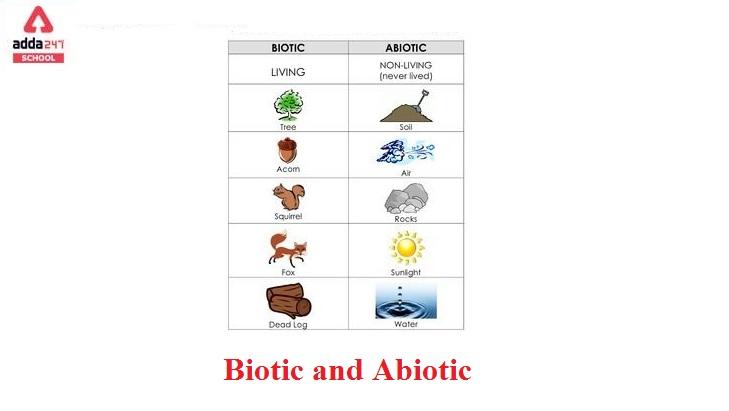Biotic and Abiotic: Any living component that impacts another organism or shapes the environment is referred to as a biotic component or biotic factor. This applies to both animals who eat other creatures in their habitat and the organism that is eaten. Human impact, infections, and disease outbreaks are all examples of biotic factors. To function properly, each biotic element needs the right quantity of energy and nourishment.
Biotic and Abiotic Factor
The word biotic is made up of two terms: “bio” refers to a live organism, and “ic” refers to something similar, hence they are referred to as living organisms when used together. As a result, biotic components might alternatively be described as all live species found on the planet.
Abiotic components, also known as abiotic factors in biology and ecology, are non-living chemical and physical elements of the environment that have an impact on live organisms and ecosystem function. Abiotic variables and the events they cause are fundamental to biology as a whole.
They are important in forming ecosystems because the interaction of biotic and abiotic variables is required for ecosystem stability.
Read About: BCG
Biotic and Abiotic Examples
All of the living components in an ecosystem are examples of biotic resources. Producers, consumers, decomposers, and detritivores are among them. All flora and fauna are examples of biotic resources.
Abiotic examples are often dependent on the ecosystem type. Abiotic components in a terrestrial ecosystem, for example, include air, weather, water, temperature, humidity, altitude, soil pH, soil type, and more. Water salinity, oxygen levels, pH levels, water flow rate, water depth, and temperature are all biotic examples in an aquatic ecosystem.
Read About: RNA
Difference between Biotic and Abiotic Components
Biotic factors have an impact on nearly all species in some form. The entire food chain would be affected if the number of predators increased, as any prey falling below that specific predator in the food chain would become prey. If the predator does not give the prey enough time to repopulate, not only the prey but also the predator may become endangered and extinct. In contrast to a decline in population size, if a species reproduces too quickly, it will result in an increase in population size, which will have an impact on the ecosystem.
Whereas, Physical factors and non-living resources that affect live creatures’ growth, maintenance, and reproduction are referred to as abiotic components. Resources are substances or items in the environment that are needed by one creature but are consumed or otherwise inaccessible to other organisms.
Moreover, both of these elements are interdependent. Assume if one of the two is eliminated or altered, the ecosystem as a whole will be affected. Abiotic factors, without a doubt, have a direct impact on organism survival.
Read About: DNA









 Try CUET College Predictor 2025 to Predi...
Try CUET College Predictor 2025 to Predi...
 CUET Result 2025 OUT (Today) @cuet.nta.n...
CUET Result 2025 OUT (Today) @cuet.nta.n...
 Why the Delay in CUET UG 2025 Results? C...
Why the Delay in CUET UG 2025 Results? C...









